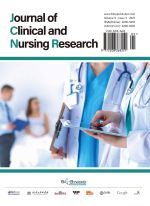Clinical Study of Autologous Skull Transplantation for the Treatment of Skull Defects
Abstract
Objective: To explore the clinical value of autologous skull transplantation in the treatment of skull defects. Methods: Sixty-six patients who underwent skull defect reconstruction treatment in our hospital from January 2022 to March 2024 were selected and divided into an autologous skull transplantation group (n=31) and an artificial bone transplantation material group (n=35) based on different bone transplantation materials. The two groups of patients were followed up for 12 months to observe the bone healing and the incidence of postoperative complications. Results: After 9 months of treatment, the bone healing performance of the autologous skull transplantation group was better than that of the artificial bone transplantation material group (P < 0.05). By the end of the last follow-up, the incidence of bony postoperative complications in the autologous skull transplantation group was lower than that in the artificial bone transplantation material group (P < 0.05). Conclusion: Autologous skull repair for skull defects has good biocompatibility, can promote bone healing, and reduce the incidence of postoperative complications.
References
Guo P, Li T, Peng Y, et al., 2024, Clinical Effect Analysis of Three-Dimensional Printed Intracranial Pressure Balancing Device in Preventing Postoperative Complications of Supratentorial Decompressive Craniectomy. Chinese Journal of Surgery, 62(12): 1120–1127.
Yadav R, Chaudhary A, Gupta D, et al., 2024, Use of Autologous Leukocyte-Platelet Rich Fibrin (L-PRF) in Endoscopic Anterior Skull Base Defect Repair – A Newer Graft Material. Indian Journal of Otolaryngology Head and Neck Surgery, 76(6): 5618–5622.
Gutierrez JA, Soler Z, Larrew T, et al., 2024, Utilization of Polydioxanone Plate for Endoscopic Anterior Skull Base Repair: Operative Technique and Long-Term Cohort Outcomes. Journal of Neurological Surgery Part B: Skull Base, 86(2): 129–137.
Starup-Hansen J, Williams S, Valetopoulou A, et al., 2024, Skull Base Repair Following Resection of Vestibular Schwannoma: A Systematic Review (Part 2: The Translabyrinthine Approach). Journal of Neurological Surgery Part B: Skull Base, 85(Suppl 2): e131–e144.
Zhan Y, Yang K, Zhao J, et al., 2024, Injectable and In Situ Formed Dual-Network Hydrogel Reinforced by Mesoporous Silica Nanoparticles and Loaded with BMP-4 for the Closure and Repair of Skull Defects. ACS Biomaterials Science and Engineering, 10(4): 2414–2425.
Fei X, Jiang D, Shen L, et al., 2023, Clinical Application of Polyetheretherketone Materials in Skull Repair after Large Bone Flap Removal. Journal of Clinical Neurosurgery, 20(4): 448–452.
Yang Z, Lin Y, Zhang Y, et al., 2023, Progress in the Application of Synthetic Polymer Materials and Natural Polymer Materials in Dura Mater Repair. International Journal of Biomedical Engineering, 46(2): 156–162.
Liao J, Cai Z, Li Y, et al., 2024, Clinical Analysis of Different Materials Used for Large Area Skull Defect Repair in Frontotemporal Region. Journal of Clinical Surgery, 32(8): 811–813.
Yang Y, Huang Z, Liu Y, 2023, Efficacy and Prognosis of Autologous Bone, Customized Titanium Mesh, and Polyetheretherketone in Patients with Skull Repair after Traumatic Brain Injury. Journal of North Sichuan Medical College, 38(8): 1098–1101.
Shen H, Chu W, Chu Z, et al., 2024, Analysis of Etiological Characteristics and Risk Factors of Incision Infection after Skull Repair Surgery. Zhejiang Medical Journal, 46(19): 2066–2069.


